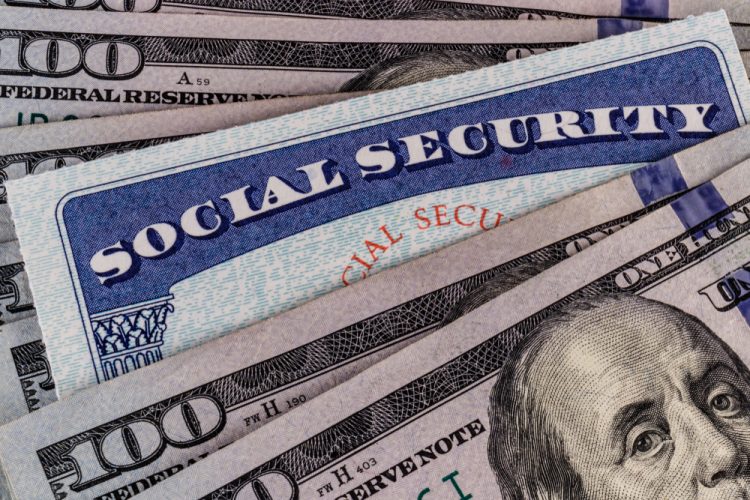Seniors across the country are about to see a dramatic shift in how they receive their Social Security benefits.
The government is making a sweeping change that will touch millions of Americans.
And Social Security just announced one major change that will effect seniors across America.
Trump’s modernization push eliminates wasteful paper check system
The Trump administration’s push to bring the federal government into the 21st century is paying dividends for American taxpayers.
Social Security announced in mid-July that it’s finally phasing out the antiquated paper check system that’s been bleeding taxpayer money for decades.
Starting September 30th, the Social Security Administration will no longer issue paper checks to beneficiaries.
The move is part of President Trump’s executive order from March directing federal agencies to modernize their payment systems.
Here’s what the bureaucrats don’t want you to know – every paper check costs taxpayers about 50 cents to process and mail.
Electronic transfers? Less than 15 cents each.
When you’re talking about millions of payments, that adds up to massive savings that go straight back to the Treasury.
According to the Social Security Administration, electronic payments deliver benefits to recipients faster than mailing paper checks, while also providing increased security against fraud and saving the federal government millions of dollars annually.¹
But it’s not just about saving money – though that’s certainly welcome news for taxpayers who’ve watched their dollars get flushed down the drain by government waste for too long.
Paper checks create massive security vulnerabilities
The security angle reveals just how backwards the old system really was.
Paper checks are 16 times more likely to be lost or stolen compared to electronic payments.
Think about that for a second – the government was knowingly using a payment method that made Social Security recipients sitting ducks for criminals.
"Paper checks are 16 times more likely to be lost or stolen compared to electronic payments, increasing the risk of fraud. Electronic payments provide a safer, more secure way to receive benefits," Social Security officials acknowledged.²
This isn’t rocket science, but it took Trump getting back into office to force the bureaucracy to do something about it.
The timing isn’t coincidental – this is exactly the kind of common-sense reform that gets buried under layers of red tape when Democrats are running the show.
Most Americans already made the switch
The transition won’t be as disruptive as critics might claim.
Less than one percent of Social Security beneficiaries currently receive paper checks.
That means more than 99% of Americans collecting Social Security have already figured out that electronic payments are faster, safer, and more reliable.
"Less than one percent of Social Security Administration currently receive paper checks. SSA is proactively contacting those beneficiaries to alert them about the change and the process to enroll in direct deposit or receive Direct Express cards," a Social Security spokesperson explained.³
The agency is working directly with the small number of people still getting paper checks to help them transition to either direct deposit or the Direct Express prepaid debit card system.
Where beneficiaries genuinely have no other option, Social Security will continue issuing paper checks under limited circumstances.
That’s a reasonable approach that balances modernization with practical realities.
Trump delivers on government efficiency promises
This move perfectly encapsulates Trump’s approach to governing – identify waste, cut it out, and make the system work better for everyone.
The Social Security Administration will include information with benefit payments explaining how beneficiaries can make the switch with help from SSA technicians.
They’ve also set up online resources through personal Social Security accounts to make the transition as smooth as possible.
Compare this to the typical government approach under Democrat administrations – endless studies, pilot programs that go nowhere, and bureaucratic excuses for why change is impossible.
Trump’s team identified a problem, found the solution, and implemented it.
The electronic payment push builds on federal policies that preceded Trump’s second term, but it took his executive order to actually force action.
That’s the difference between a businessman who knows how to get things done and career politicians who talk about reform without ever delivering.
Real savings for taxpayers and better service
The math here is straightforward and impressive.
Every time the government sends an electronic payment instead of a paper check, taxpayers save about 35 cents.
Multiply that across millions of payments and you’re looking at substantial savings that add up fast.
But the benefits go beyond just cost savings – electronic payments are faster, more secure, and more convenient for recipients.
No more worrying about checks getting lost in the mail or stolen from mailboxes.
No more delays when the Postal Service has problems.
No more trips to the bank to deposit checks.
This is exactly the kind of government modernization that should have happened years ago.
It took Trump coming back to Washington, D.C. to finally make it reality.
The swamp creatures who’ve been collecting paychecks while managing an inefficient system probably aren’t thrilled about being forced to actually do their jobs.
But American taxpayers and Social Security recipients are the real winners here.
¹ Eric Revell, "Social Security phasing out paper checks as Trump pushes payment overhaul," Fox Business, August 5, 2025.
² Ibid.
³ Ibid.
















